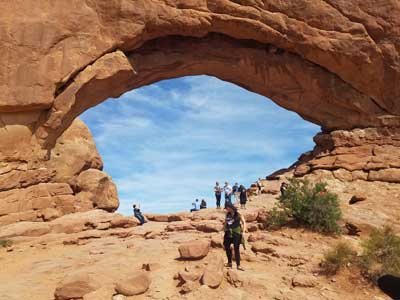Arches National Park Travel Guide
National park known for more than 2,000 natural sandstone arches, including the well-known Delicate Arch, as well as a variety of unique geological resources and formations and contains the highest density of natural arches in the world
Arches Visitor Center open 9am to 4pm daily
Admission to Arches National Park is good for seven days
Accepts America The Beautiful Pass
From Moab, UT: Head west on E Center St toward N Main St. Turn right onto US-191 N/N Main St Continue to follow US-191 N. Turn right onto Arches Entrance Rd.
Overview
Arches National Park is a national park in eastern Utah. The park is adjacent to the Colorado River, 4 miles (6 km) north of Moab, Utah. More than 2,000 natural sandstone arches are located in the park, including the well-known Delicate Arch, as well as a variety of unique geological resources and formations. The park contains the highest density of natural arches in the world.
The park consists of 76,679 acres (119.811 sq mi; 31,031 ha; 310.31 km2) of high desert located on the Colorado Plateau. The highest elevation in the park is 5,653 feet (1,723 m) at Elephant Butte, and the lowest elevation is 4,085 feet (1,245 m) at the visitor center. The park receives an average of less than 10 inches (250 mm) of rain annually.
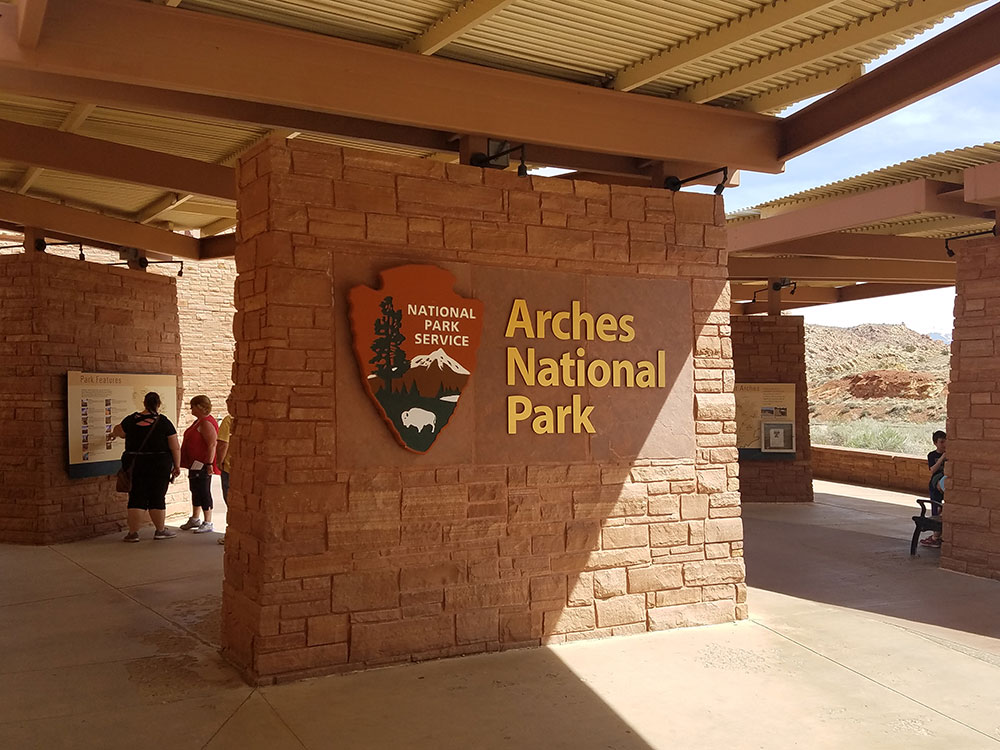
Administered by the National Park Service, the area was originally named a national monument on April 12, 1929, and was redesignated as a national park on November 12, 1971. The park received more than 1.6 million visitors in 2018.
The Arches area was first brought to the attention of the National Park Service by Frank A. Wadleigh, passenger traffic manager of the Denver and Rio Grande Western Railroad. Wadleigh, accompanied by railroad photographer George L. Beam, visited the area in September 1923 at the invitation of Alexander Ringhoffer, a Hungarian-born prospector living in Salt Valley. Ringhoffer had written to the railroad in an effort to interest them in the tourist potential of a scenic area he had discovered the previous year with his two sons and a son-in-law, which he called the Devils Garden (known today as the Klondike Bluffs). Wadleigh was impressed by what Ringhoffer showed him, and suggested to Park Service director Stephen T. Mather that the area be made a national monument.
The following year, additional support for the monument idea came from Laurence Gould, a University of Michigan graduate student (and future polar explorer) studying the geology of the nearby La Sal Mountains, who was shown the scenic area by local physician Dr. J. W. "Doc" Williams.
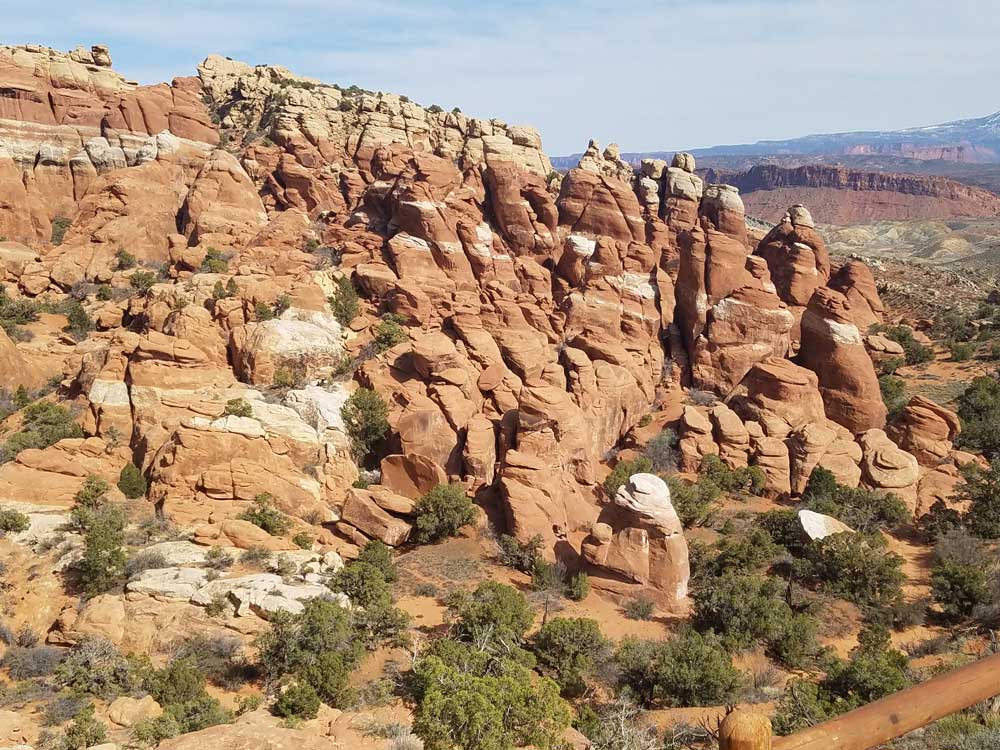
Fiery Furnace
In April 1929, shortly after his inauguration, President Herbert Hoover signed a presidential proclamation creating Arches National Monument, consisting of two comparatively small, disconnected sections. The purpose of the reservation under the 1906 Antiquities Act was to protect the arches, spires, balanced rocks, and other sandstone formations for their scientific and educational value. The name Arches was suggested by Frank Pinkely, superintendent of the Park Service's southwestern national monuments, following a visit to the Windows section in 1925.
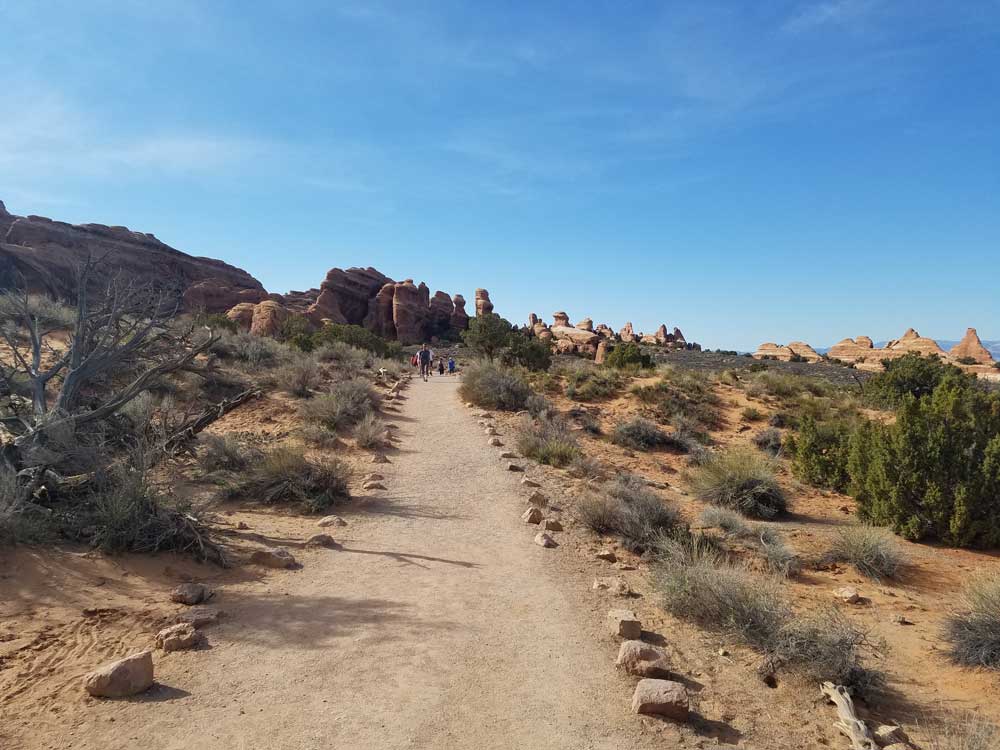
In late 1938, President Franklin D. Roosevelt signed a proclamation that enlarged Arches to protect additional scenic features and permit development of facilities to promote tourism. A small adjustment was made by President Dwight Eisenhower in 1960 to accommodate a new road alignment.
In early 1969, just before leaving office, President Lyndon B. Johnson signed a proclamation substantially enlarging Arches. Two years later, President Richard Nixon signed legislation enacted by Congress, which significantly reduced the total area enclosed, but changed its status to a national park.
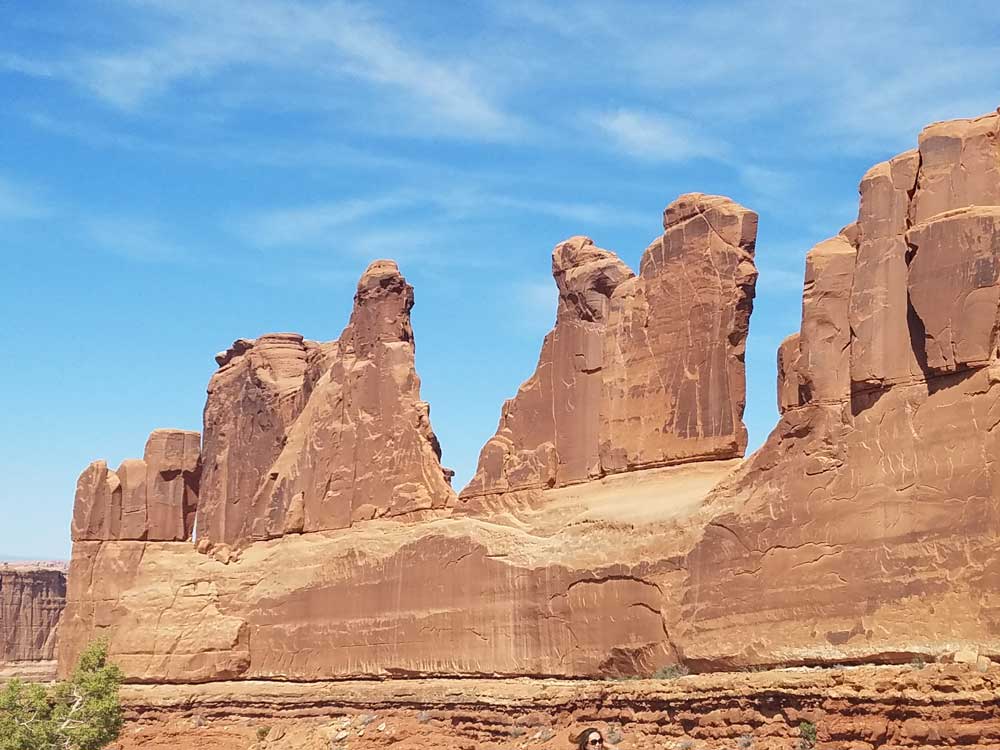
Climbing Balanced Rock or any named or unnamed arch in Arches National Park with an opening larger than 3 ft (0.9 m) is banned by park regulations. Approved recreational activities include auto touring, hiking, bicycling, camping at the Devils Garden campground, backpacking, canyoneering, and rock climbing, with permits required for the last three activities. Guided commercial tours and ranger programs are also available.
Among the notable features of the park are:
- Balanced Rock - a large balancing rock, the size of three school buses
- Courthouse Towers - a collection of tall stone columns
- Dark Angel - a free-standing 150-foot-tall (46 m) sandstone pillar at the end of the Devils Garden Trail
- Delicate Arch - a lone-standing arch which has become a symbol of Utah and the most recognized arch in the park
- Devils Garden - many arches and columns scattered along a ridge
- Double Arch - two arches that share a common end
- Fiery Furnace - an area of maze-like narrow passages and tall rock columns
- Landscape Arch - a very thin and long arch in the Devils Garden with a span of 290 feet (88 m) (the longest arch in the park)
- Petrified Dunes - petrified remnants of sand dunes blown from the ancient lakes that covered the area
This article uses material from the Wikipedia article "Arches National Park", which is released under the Creative Commons Attribution-Share-Alike License 3.0
Featured Regions and Trails
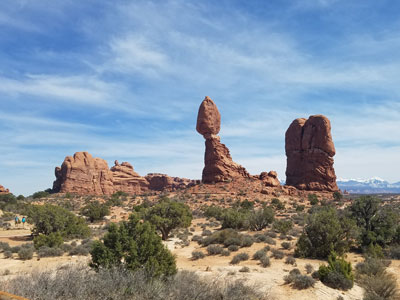
Balanced Rock
Largest rock of its kind in the park, weighing approximately the same as an icebreaker ship or 27 blue whales
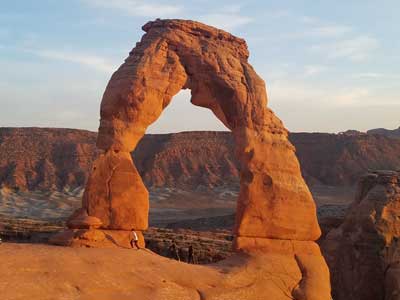
Jeff P from Berkeley, CA, USA, CC BY 2.0, via Wikimedia Commons; Image Size Adjusted
Delicate Arch
0.7 mile round trip, 141 ft
Delicate Arch Trail
3.2 miles round trip, 629 ft
Freestanding natural arch is the most widely recognized landmark in park
Devils Garden Trail
Trail leading to Landscape Arch, Tunnel Arch, Pine Tree Arch, Partition, Navajo, Double O, Private Arch, the Dark Angel monolith and Fin Canyon
Double Arch Trail
Close-set pair of natural arches in Arches National and is one of the more known features of the park
Fiery Furnace
Collection of narrow sandstone canyons, fins and natural arches named for the reddish hue it exhibits in sunset light
Park Avenue and Courthouse Towers
Massive monoliths and towering walls and views of the nearby La Sal Mountains
Windows Loop and Turret Arch
Area containing a large concentration of arches and is one of the most scenic locations in the park
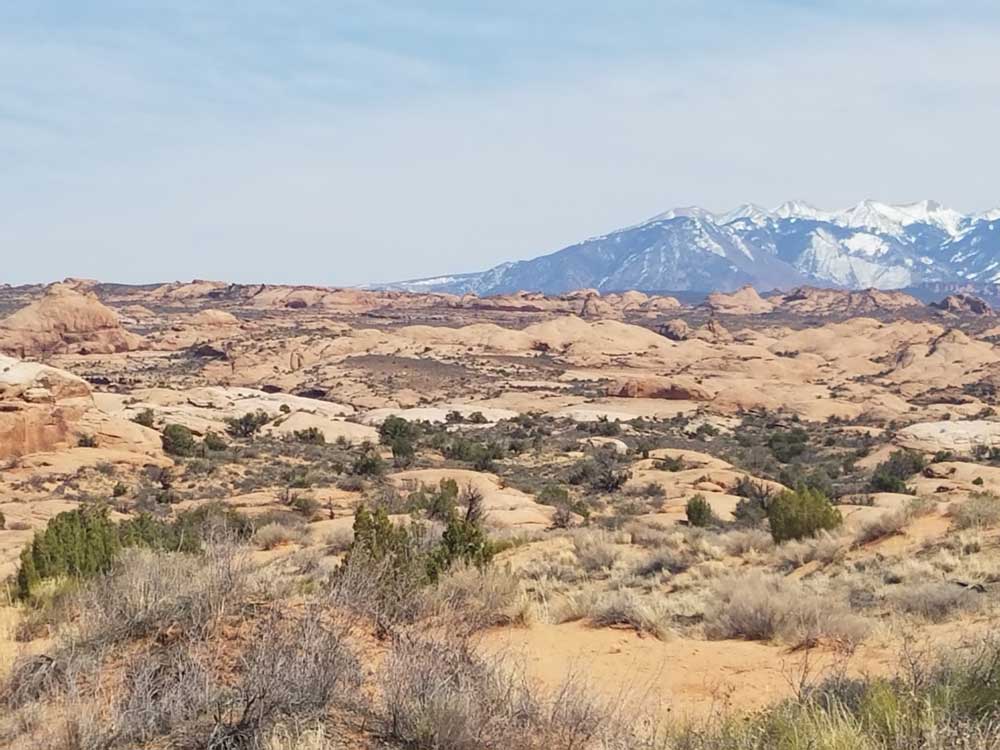
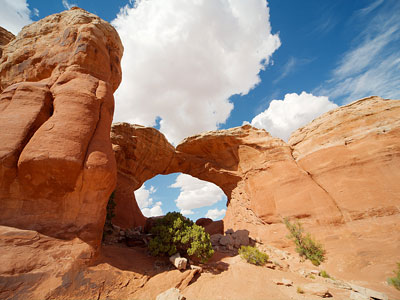
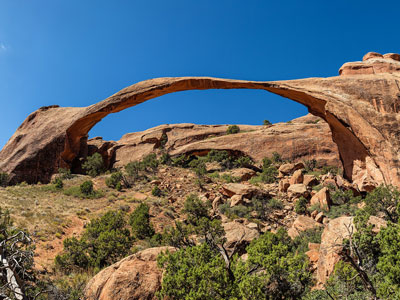
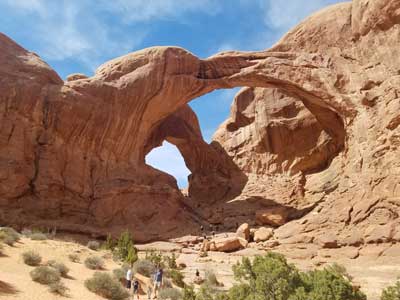
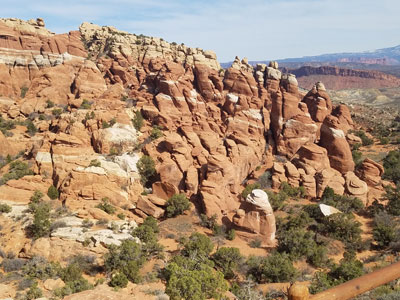
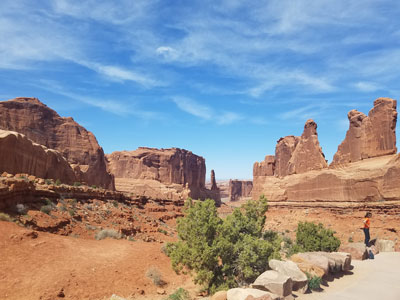
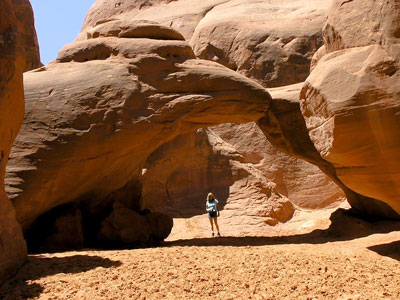

_(15512633303)-400.jpg)
